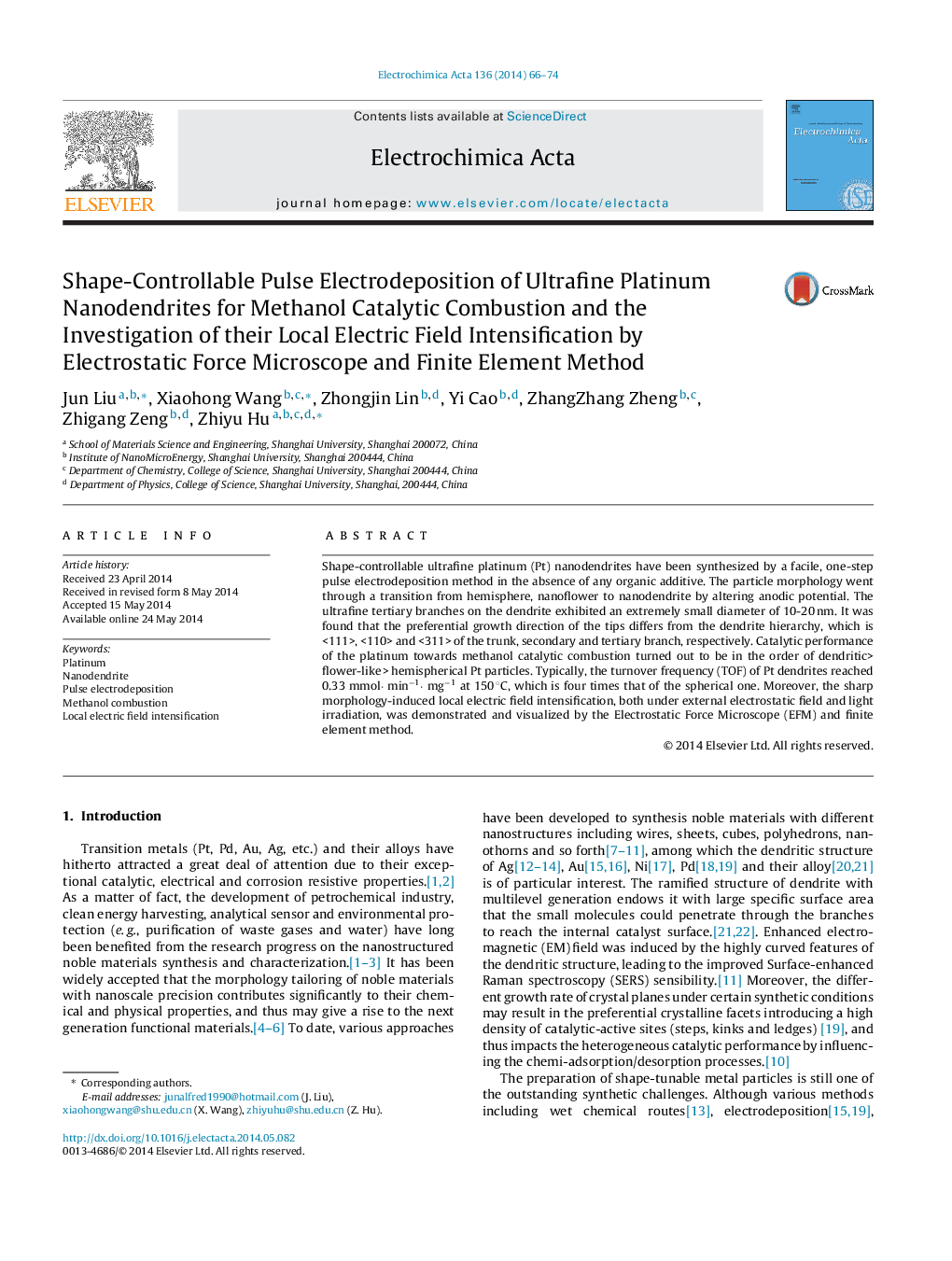| Article ID | Journal | Published Year | Pages | File Type |
|---|---|---|---|---|
| 185388 | Electrochimica Acta | 2014 | 9 Pages |
Shape-controllable ultrafine platinum (Pt) nanodendrites have been synthesized by a facile, one-step pulse electrodeposition method in the absence of any organic additive. The particle morphology went through a transition from hemisphere, nanoflower to nanodendrite by altering anodic potential. The ultrafine tertiary branches on the dendrite exhibited an extremely small diameter of 10-20 nm. It was found that the preferential growth direction of the tips differs from the dendrite hierarchy, which is <111>, <110> and <311> of the trunk, secondary and tertiary branch, respectively. Catalytic performance of the platinum towards methanol catalytic combustion turned out to be in the order of dendritic> flower-like > hemispherical Pt particles. Typically, the turnover frequency (TOF) of Pt dendrites reached 0.33 mmol· min−1· mg−1 at 150 °C, which is four times that of the spherical one. Moreover, the sharp morphology-induced local electric field intensification, both under external electrostatic field and light irradiation, was demonstrated and visualized by the Electrostatic Force Microscope (EFM) and finite element method.
